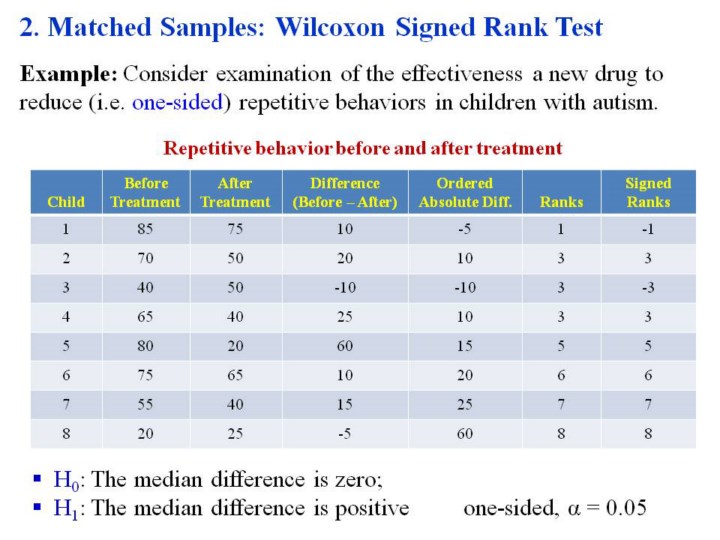| front |1 |2 |3 |4 |5 |6 |7 |8 |9 |10 |11 |12 |13 |14 |15 |16 |17 |18 |19 |20 |21 |22 |23 |24 |25 |26 |27 |28 |29 |30 |31 |32 |33 |34 |35 |36 |37 |38 |39 |40 |41 |42 |43 |44 |45 |46 |47 |48 |49 |50 |51 |52 |53 |54 |55 |review |
 |
1.Here
we have 8 subjects and want to compare ratings of repetitive behaviors
among children with autism before and after treatment.
2.We
calculate the difference in behavior score for each child, and then
order the difference from low to high and assign ranks, and signed
ranks.
3.In
this example, we are conducting a 1-sided test, meaning test whether the
new drug is beneficial and not potentially worse.
|